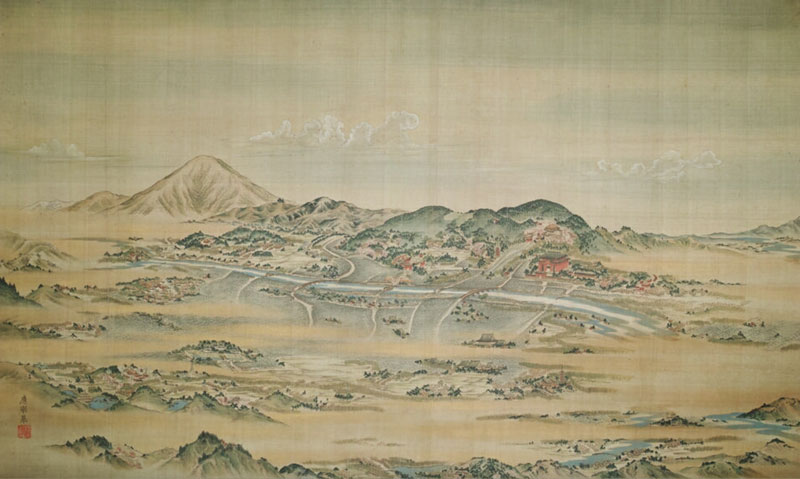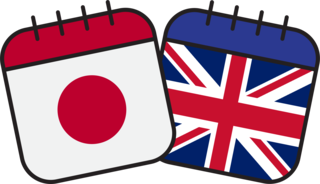
Kyōraku fukanzu京洛俯瞰図 (A View of Kyoto), early 19th, Kobe City Museum,
A Tale of Two Early 19th c. Kyoto City Views: Misattribution, Rediscovery, & Nostalgia
- 12 May 2025
- 5:00pm – 6:30pm (BST)
- Room 8/9, Faculty of Asian and Middle Eastern Studies, University of Cambridge
- https://www.sainsbury-institute.org/events/a-tale-of-two-early-19th-c-kyoto-city-views-misattribution-rediscovery-nostalgia/
- 01603 597507
- sisjac@sainsbury-institute.org
- Tweet
Speaker: Dr Pauline Ota (Robert and Lisa Sainsbury Fellow 2024-2025)
This talk investigates two early nineteenth century representations of Kyoto. The first is a detailed, printed map by Kō Kazan (1784-1837) of 1808, Karaku ichiran zu (Panoramic View of Kyoto), which presents a sweeping eastward view across the city. Closely resembling this printed map and most probably also produced by Kazan is the second work, a painting titled Kyōraku fukanzu (A View of Kyoto) housed in the collection of the Kobe City Museum and often attributed to the famed late eighteenth century artist Maruyama Ōkyo (1733-95). How did the misattribution occur? This question instigated a study that navigates intersections with the printed Kyoto map genre, the painted cityscape tradition originating with the “Scenes in and out of the Capital (Rakuchū rakugaizu)” screens, and recent art historical research on Kō Kazan and his work. What was uncovered is that the popular Kyoto map and its painted version both capture a unique moment in the long history and art history of the city, one that arose following the devastation of the Great Tenmei Fire of 1788. This talk thus proposes that the printed map, Panoramic View of Kyoto, and the painting, A View of Kyoto, express a form of nostalgia, one that is more complex than that of a longing for the past.
